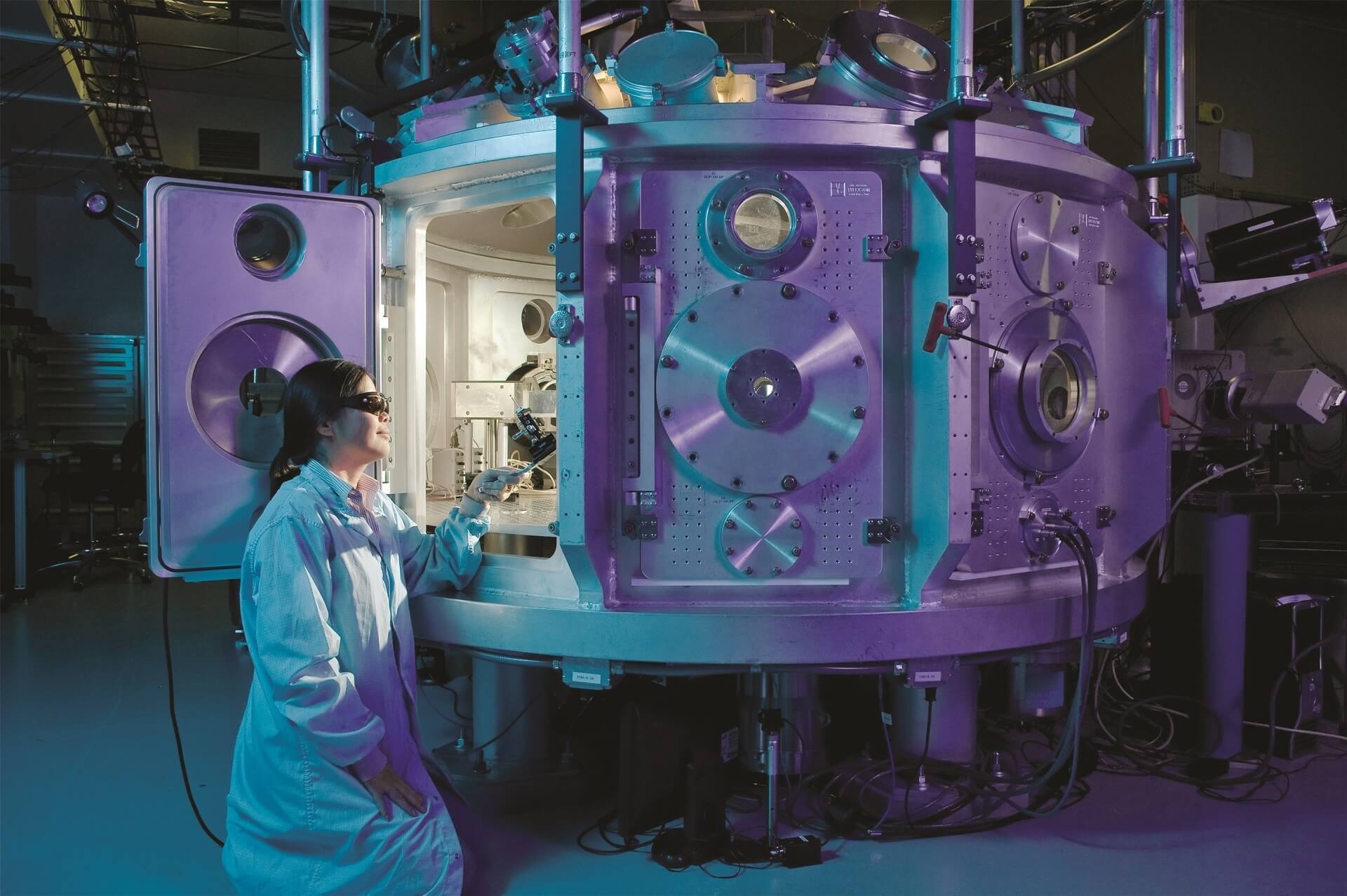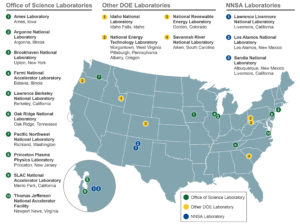State-Sponsored Innovation
Visit the Smithsonian Natural History Museum in Washington, DC, and you will see some of our national jewels, including the Hope Diamond and other amazing and valuable natural wonders. Just across the National Mall and behind the Smithsonian Castle is the headquarters of the Department of Energy (DOE), the agency responsible for another collection of amazing, valuable national jewels: the DOE national laboratories.
I always find it perplexing how little people outside the DOE know and understand about the national labs. Perhaps this is not too surprising since the labs make up only a small part of the U.S. government budget. However, the impact these labs have on science and technology is huge. Well over a hundred Nobel Prizes have come from the DOE labs. The national laboratories have developed technologies that affect our everyday lives, including the materials in products we use, the computers we interact with, and the vehicles we ride in. The fracking technology that has revolutionized the energy world was also aided by technologies from DOE national labs.
The system of national laboratories dates back to the early 20th century. During World War II, that system greatly expanded as science and technology were seen as a strategic advantage by all countries involved in the conflict. The United States was determined, perhaps more than any other country, to harness that advantage to win the war. In many ways that is exactly what happened as a result of the Manhattan Project.
Over the years, the system of labs and facilities first started by the Manhattan Project has grown and evolved into the national laboratory system we have today. The system consists of three types of labs:
- Discovery science labs managed by the Office of Science
- Nuclear weapons labs managed by the National Security Administration
- Applied energy technology labs managed by the Offices of Nuclear Energy, Fossil Energy, and Energy Efficiency and Renewable Energy
It is important to understand that while each lab has a principal managing DOE office, most are “multi-purpose” labs and have capabilities to conduct R&D in many different areas. It is common for a nuclear weapons lab to conduct discovery science research and vice versa.
Image: United States Department of Energy, Office of Science.
Starting in WWII, the United States adopted the practice of using Federally Funded Research and Development Corporations (FFRDCs). This structure allows the U.S. government to “own” the labs and all of the equipment associated with them, but does not require the researcher employees to be part of the government. Rather, the employees work for what is known as a Maintenance and Operation (M&O) contractor. Initially, these were universities because they were seen as the best way to attract and retain the best scientific and engineering talent. This business model goes back to General Leslie Groves and Robert Oppenheimer, who were thinking about making the labs military organizations but determined that “science does not salute.” These types of labs are known as Government Owned, Contractor Operated (GOCO) labs. The DOE is also responsible for a few GOGO (Government Owned, Government Operated) labs.
The magic of the national labs is that they have been able to harness the best of an academic research environment with the relative stability of government programs. Quite a few people at the national labs complain about what seems like constant turmoil in programs, but the reality is that significant changes occur in only about 20% of the programs. The remaining 80% are for the most part quite stable from year to year. Also, even though there might be disruptions in programs, the labs themselves are stable places for people to work. This combination of stability plus the ability to attract and pay for top-notch people and provide them with cutting-edge research equipment makes the national labs magical places. Researchers are able to imagine ways to change the world — and then do something about it.
During Energy Secretary Rick Perry’s introductory address he spoke about his deep appreciation of the DOE national labs. He talked about the opportunity he had to work with Texas A&M and the University of Texas to create a proposal to become the M&O of Sandia National Laboratories. He said, ” . . . knowing and learning what you [the DOE] do and the potential of what we have in front of us and these jewels that these national labs are gave me this incredibly new appreciation about the Department of Energy, about the role that you play, about the importance of commercialization of technology.”
These are very encouraging words from the person who is now in charge of the DOE national labs. He understands the national jewels that have been entrusted to him and their ongoing potential to change the worlds of science and technology for the benefit of all Americans.
Join the Catalyst Monitor
Join our community, where we push out regular insights to help maintain situational awareness on technological and socioeconomic trends.




